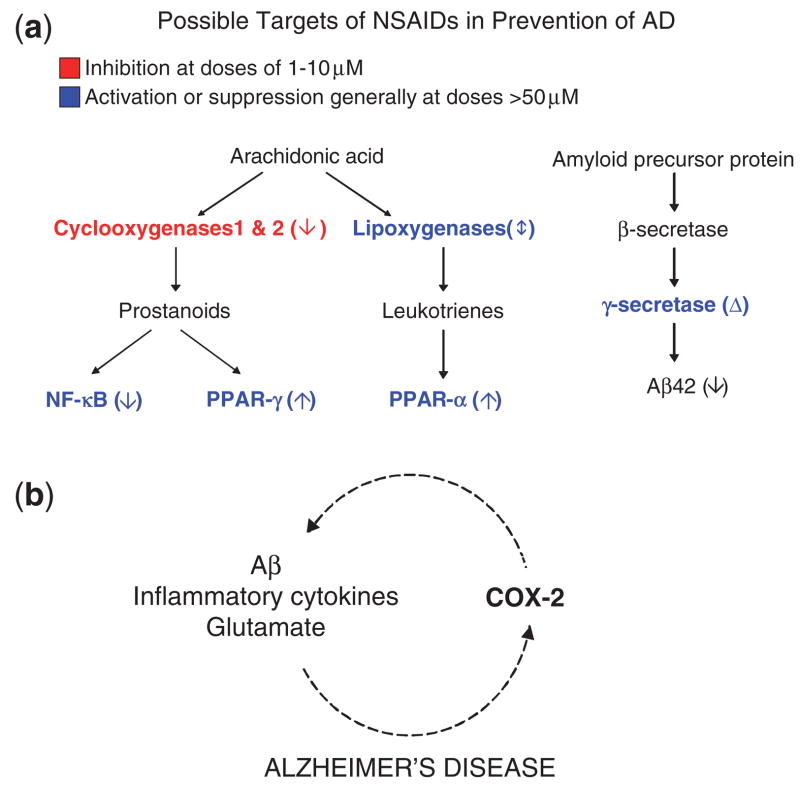Fig. 1.
Possible targets of NSAIDS in the prevention of Alzheimer’s disease and proposed pathophysiology of memory loss in the Tg2576 mouse model of Alzheimer’s disease. (a) The activities of enzymes and factors (blue and red lettering) are affected by NSAIDs in the direction indicated by the arrow in parentheses or by the delta sign signifying a qualitative alteration in activity. The cyclooxygenases COX-1 and COX-2 are major targets of NSAIDs because their inhibition can be achieved at doses between 1 and 10 μM. The activation or suppression of other targets, including peroxisome proliferators-activated receptors (PPARs) and nuclear factor-kB (NF-kB), generally requires higher concentrations (>50 μM) of NSAIDs. Non-selective NSAIDs inhibit both COX-1 and COX-2. The coxibs selectively inhibit COX-2. A subset of NSAIDs, including ibuprofen but not naproxen or the coxibs, lowers production of Aβ42, the highly amyloidogenic 42-residue form of Aβ, by modulating γ-secretase activity. (b) In Alzheimer’s disease COX-2 is stimulated by Aβ, glutamate and inflammatory cytokines, which in turn are modulated by COX-2.

